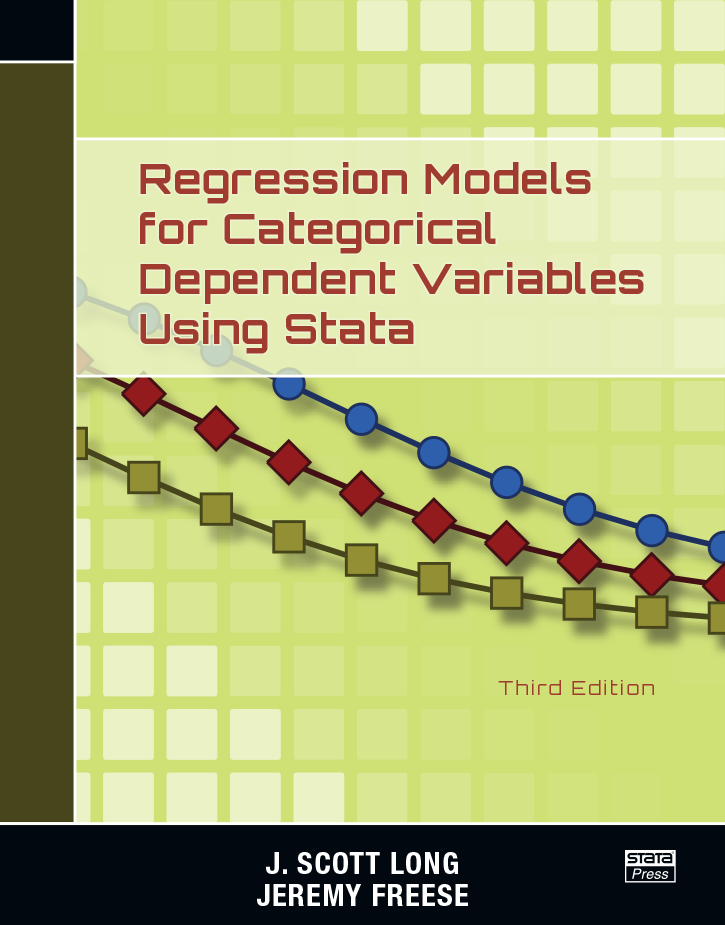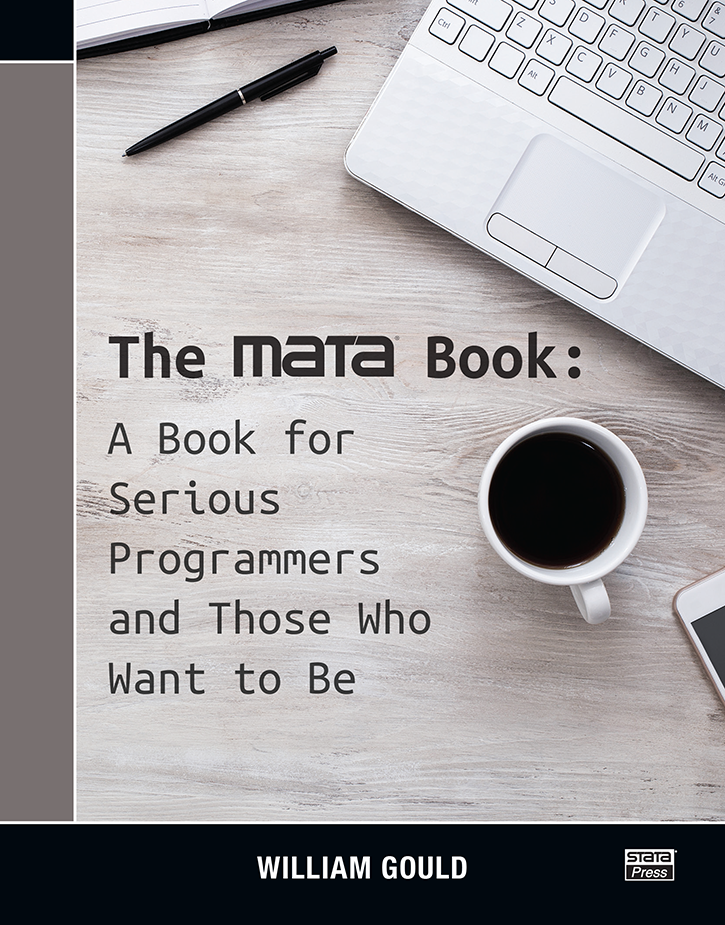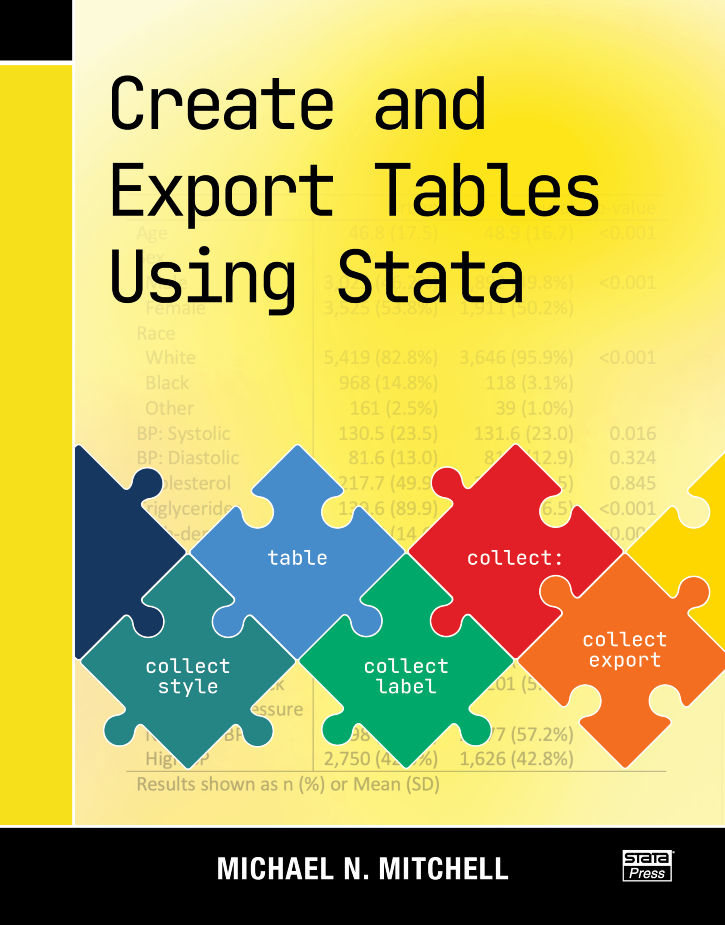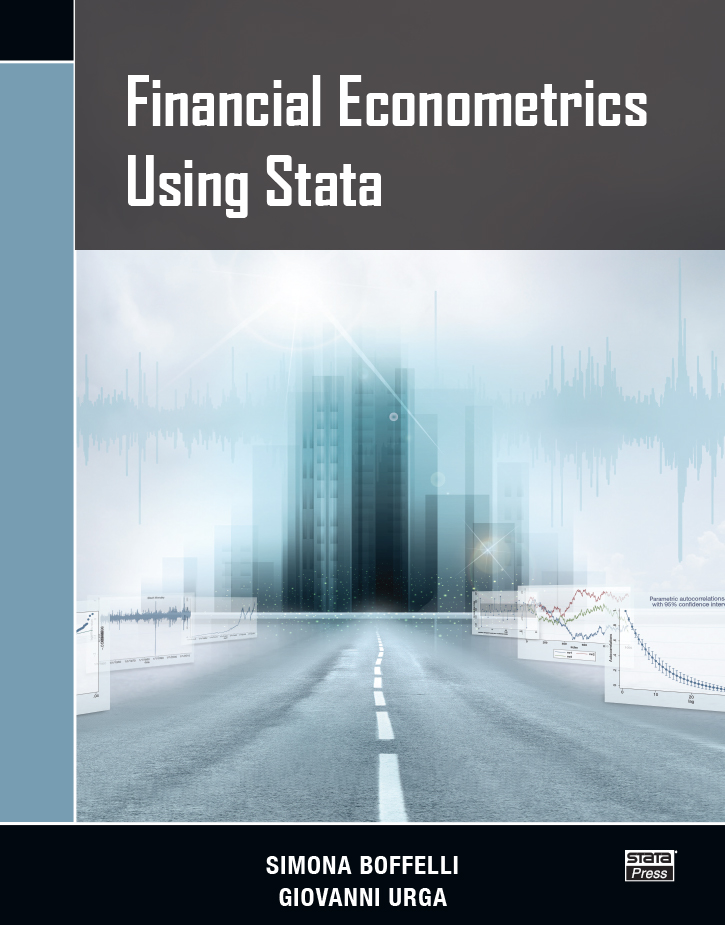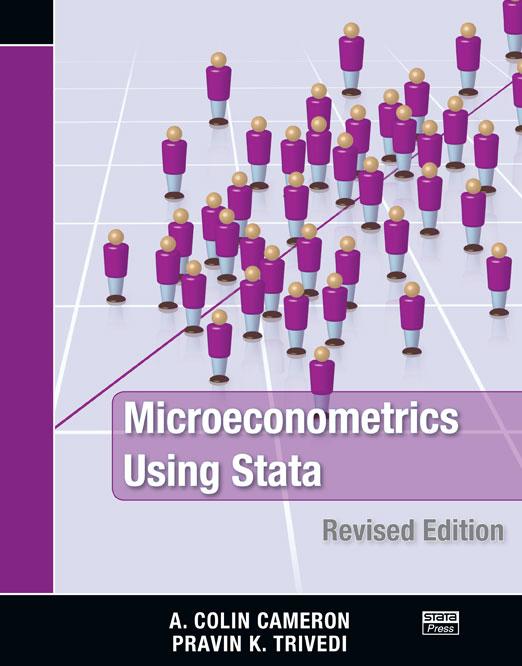
Microeconometrics Using Stata, Revised Edition
81,600원
Authors: A. Colin Cameron and Pravin K. Trivedi Publisher: Stata Press Copyright: 2010 ISBN-13: 978-1-59718-073-3 Pages: 706; paperback
Microeconometrics Using Stata, Revised Edition, by A. Colin Cameron and Pravin K. Trivedi, is an outstanding introduction to microeconometrics and how to do microeconometric research using Stata. Aimed at students and researchers, this book covers topics left out of microeconometrics textbooks and omitted from basic introductions to Stata. Cameron and Trivedi provide the most complete and up-to-date survey of microeconometric methods available in Stata.
The revised edition has been updated to reflect the new features available in Stata 11 germane to microeconomists. Instead of using mfx and the community-contributed margeff commands, the revised edition uses the new margins command, emphasizing both marginal effects at the means and average marginal effects. Factor variables, which allow you to specify indicator variables and interaction effects, replace the xi command. The new gmm command for generalized method of moments and nonlinear instrumental-variables estimation is presented, along with several examples. Finally, the chapter on maximum likelihood estimation incorporates the enhancements made to ml in Stata 11.
Early in the book, Cameron and Trivedi introduce simulation methods and then use them to illustrate features of the estimators and tests described in the rest of the book. While simulation methods are important tools for econometricians, they are not covered in standard textbooks. By introducing simulation methods, the authors arm students and researchers with techniques they can use in future work. Cameron and Trivedi address each topic with an in-depth Stata example, and they reference their 2005 textbook, Microeconometrics: Methods and Applications, where appropriate.
The authors also show how to use Stata’s programming features to implement methods for which Stata does not have a specific command. Although the book is not specifically about Stata programming, it does show how to solve many programming problems. These techniques are essential in applied microeconometrics because there will always be new, specialized methods beyond what has already been incorporated into a software package.
Cameron and Trivedi’s choice of topics perfectly reflects the current practice of modern microeconometrics. After introducing the reader to Stata, the authors introduce linear regression, simulation, and generalized least-squares methods. The section on cross-sectional techniques is thorough, with up-to-date treatments of instrumental-variables methods for linear models and of quantile-regression methods.
The next section of the book covers estimators for the parameters of linear panel-data models. The authors’ choice of topics is unique: after addressing the standard random-effects and fixed-effects methods, the authors also describe mixed linear models—a method used in many areas outside of econometrics.
Cameron and Trivedi not only address methods for nonlinear regression models but also show how to code new nonlinear estimators in Stata. In addition to detailing nonlinear methods, which are omitted from most econometrics textbooks, this section shows researchers and students how to easily implement new nonlinear estimators.
The authors next describe inference using analytical and bootstrap approximations to the distribution of test statistics. This section highlights Stata’s power to easily obtain bootstrap approximations, and it also introduces the basic elements of statistical inference.
Cameron and Trivedi then include an extensive section about methods for different nonlinear models. They begin by detailing methods for binary dependent variables. This section is followed by sections about multinomial models, tobit and selection models, count-data models, and nonlinear panel-data models. Two appendices about Stata programming complete the book.
The unique combination of topics, intuitive introductions to methods, and detailed illustrations of Stata examples make Microeconometrics Using Stataan invaluable, hands-on addition to the library of anyone who uses microeconometric methods.
Colin Cameron is a professor of economics at the University of California–Davis where he teaches econometrics at undergraduate and graduate levels, as well as an undergraduate course in health economics. He has additionally taught several short courses in econometrics in Europe and Australia. His research interests span a range of topics within microeconometrics. He is a past director of the Center on Quantitative Social Science Research at UC–Davis and is currently an associate editor of the Stata Journal.
Pravin K. Trivedi is currently the J.H. Rudy professor in the Department of Economics at Indiana University–Bloomington. During his academic career, he has taught undergraduate- and graduate-level econometrics in the United States, Europe, and Australia. His research interests are in microeconometrics and health economics. He served as coeditor of the Econometrics Journal from 2000–2007 and has been on the editorial board of the Journal of Applied Econometrics since 1988. He has coauthored (with David Zimmer) Copula Modeling in Econometrics: An Introduction for Practitioners (2007).
Cameron and Trivedi’s joint work includes research articles on econometric models and tests for count data, the Econometric Society monographRegression Analysis of Count Data, and the graduate-level text Microeconometrics: Methods and Applications.
1.2 Documentation
1.3 Command syntax and operators
1.4 Do-files and log files
1.5 Scalars and matrices
1.6 Using results from Stata commands
1.7 Global and local macros
1.8 Looping commands
1.9 Some useful commands
1.10 Template do-file
1.11 User-written commands
1.12 Stata resources
1.13 Exercises
2.2 Types of data
2.3 Inputting data
2.4 Data management
2.5 Manipulating datasets
2.6 Graphical display of data
2.7 Stata resources
2.8 Exercises
3.2 Data and data summary
3.3 Regression in levels and logs
3.4 Basic regression analysis
3.5 Specification analysis
3.6 Prediction
3.7 Sampling weights
3.8 OLS using Mata
3.9 Stata resources
3.10 Exercises
4.2 Pseudorandom-number generators: Introduction
4.4 Pseudorandom-number generators: Further details
4.5 Computing integrals
4.6 Simulation for regression: Introduction
4.7 Stata resources
4.8 Exercises
5.2 GLS and FGLS regression
5.3 Modeling heteroskedastic data
5.4 System of linear regressions
5.5 Survey data: Weighting, clustering, and stratification
5.6 Stata resources
5.7 Exercises
6.2 IV estimation
6.3 IV example
6.4 Weak instruments
6.5 Better inference with weak instruments
6.6 3SLS systems estimation
6.7 Stata resources
6.8 Exercises
7.2 QR
7.3 QR for medical expenditures data
7.4 QR for generated heteroskedastic data
7.5 QR for count data
7.6 Stata resources
7.7 Exercises
8.2 Panel-data methods overview
8.3 Panel-data summary
8.4 Pooled or population-averaged estimators
8.5 Within estimator
8.6 Between estimator
8.7 RE estimator
8.8 Comparison of estimators
8.9 First-difference estimator
8.10 Long panels
8.11 Panel-data management
8.12 Stata resources
8.13 Exercises
9.2 Panel IV estimation
9.3 Hausman–Taylor estimator
9.4 Arellano–Bond estimator
9.5 Mixed linear models
9.6 Clustered data
9.7 Stata resources
9.8 Exercises
10.2 Nonlinear example: Doctor visits
10.3 Nonlinear regression methods
10.4 Different estimates of the VCE
10.5 Prediction
10.6 Marginal effects
10.7 Model diagnostics
10.8 Stata resources
10.9 Exercises
11.2 Newton–Raphson method
11.4 The ml command: lf method
11.5 Checking the program
11.6 The ml command: d0, d1, d2, lf0, lf1, and lf2 methods
11.7 The Mata optimize() function
11.9 Stata resources
11.10 Exercises
12.2 Critical values and p-values
12.3 Wald tests and confidence intervals
12.4 Likelihood-ratio tests
12.5 Lagrange multiplier test (or score test)
12.6 Test size and power
12.7 Specification tests
12.8 Stata resources
12.9 Exercises
13.2 Bootstrap methods
13.3 Bootstrap pairs using the vce(bootstrap) option
13.4 Bootstrap pairs using the bootstrap command
13.5 Bootstraps with asymptotic refinement
13.6 Bootstrap pairs using bsample and simulate
13.7 Alternative resampling schemes
13.8 The jackknife
13.9 Stata resources
13.10 Exercises
14.2 Some parametric models
14.3 Estimation
14.4 Example
14.5 Hypothesis and specification tests
14.6 Goodness of fit and prediction
14.7 Marginal effects
14.8 Endogenous regressors
14.9 Grouped data
14.10 Stata resources
14.11 Exercises
15.2 Multinomial models overview
15.3 Multinomial example: Choice of fishing mode
15.4 Multinomial logit model
15.5 Conditional logit model
15.6 Nested logit model
15.7 Multinomial probit model
15.8 Random-parameters logit
15.9 Ordered outcome models
15.10 Multivariate outcomes
15.11 Stata resources
15.12 Exercises
16.2 Tobit model
16.3 Tobit model example
16.4 Tobit for lognormal data
16.5 Two-part model in logs
16.6 Selection model
16.7 Prediction from models with outcome in logs
16.8 Stata resources
16.9 Exercises
17.2 Features of count data
17.3 Empirical example 1
17.5 Models with endogenous regressors
17.6 Stata resources
17.7 Exercises
18.2 Nonlinear panel-data overview
18.3 Nonlinear panel-data example
18.4 Binary outcome models
18.5 Tobit model
18.6 Count-data models
18.7 Stata resources
18.8 Exercises
A.2 Programs
A.3 Program debugging
B.2 Mata matrix commands
B.3 Programming in Mata

